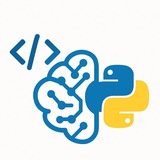A curated collection of Kaggle notebooks showcasing how to build end-to-end AI applications using Hugging Face pretrained models, covering text, speech, image, and vision-language tasks — full tutorials and code available on GitHub:
1️⃣ Text-Based Applications
1.1. Building a Chatbot Using HuggingFace Open Source Models
https://lnkd.in/dku3bigK
1.2. Building a Text Translation System using Meta NLLB Open-Source Model
https://lnkd.in/dgdjaFds
2️⃣ Speech-Based Applications
2.1. Zero-Shot Audio Classification Using HuggingFace CLAP Open-Source Model
https://lnkd.in/dbgQgDyn
2.2. Building & Deploying a Speech Recognition System Using the Whisper Model & Gradio
https://lnkd.in/dcbp-8fN
2.3. Building Text-to-Speech Systems Using VITS & ArTST Models
https://lnkd.in/dwFcQ_X5
3️⃣ Image-Based Applications
3.1. Step-by-Step Guide to Zero-Shot Image Classification using CLIP Model
https://lnkd.in/dnk6epGB
3.2. Building an Object Detection Assistant Application: A Step-by-Step Guide
https://lnkd.in/d573SvYV
3.3. Zero-Shot Image Segmentation using Segment Anything Model (SAM)
https://lnkd.in/dFavEdHS
3.4. Building Zero-Shot Depth Estimation Application Using DPT Model & Gradio
https://lnkd.in/d9jjJu_g
4️⃣ Vision Language Applications
4.1. Building a Visual Question Answering System Using Hugging Face Open-Source Models
https://lnkd.in/dHNFaHFV
4.2. Building an Image Captioning System using Salesforce Blip Model
https://lnkd.in/dh36iDn9
4.3. Building an Image-to-Text Matching System Using Hugging Face Open-Source Models
https://lnkd.in/d7fsJEAF
➡️ You can find the articles and the codes for each article in this GitHub repo:
https://lnkd.in/dG5jfBwE
1️⃣ Text-Based Applications
1.1. Building a Chatbot Using HuggingFace Open Source Models
https://lnkd.in/dku3bigK
1.2. Building a Text Translation System using Meta NLLB Open-Source Model
https://lnkd.in/dgdjaFds
2️⃣ Speech-Based Applications
2.1. Zero-Shot Audio Classification Using HuggingFace CLAP Open-Source Model
https://lnkd.in/dbgQgDyn
2.2. Building & Deploying a Speech Recognition System Using the Whisper Model & Gradio
https://lnkd.in/dcbp-8fN
2.3. Building Text-to-Speech Systems Using VITS & ArTST Models
https://lnkd.in/dwFcQ_X5
3️⃣ Image-Based Applications
3.1. Step-by-Step Guide to Zero-Shot Image Classification using CLIP Model
https://lnkd.in/dnk6epGB
3.2. Building an Object Detection Assistant Application: A Step-by-Step Guide
https://lnkd.in/d573SvYV
3.3. Zero-Shot Image Segmentation using Segment Anything Model (SAM)
https://lnkd.in/dFavEdHS
3.4. Building Zero-Shot Depth Estimation Application Using DPT Model & Gradio
https://lnkd.in/d9jjJu_g
4️⃣ Vision Language Applications
4.1. Building a Visual Question Answering System Using Hugging Face Open-Source Models
https://lnkd.in/dHNFaHFV
4.2. Building an Image Captioning System using Salesforce Blip Model
https://lnkd.in/dh36iDn9
4.3. Building an Image-to-Text Matching System Using Hugging Face Open-Source Models
https://lnkd.in/d7fsJEAF
➡️ You can find the articles and the codes for each article in this GitHub repo:
https://lnkd.in/dG5jfBwE
#HuggingFace #Kaggle #AIapplications #DeepLearning #MachineLearning #ComputerVision #NLP #SpeechRecognition #TextToSpeech #ImageProcessing #OpenSourceAI #ZeroShotLearning #Gradio
✉️ Our Telegram channels: https://t.me/addlist/0f6vfFbEMdAwODBk📱 Our WhatsApp channel: https://whatsapp.com/channel/0029VaC7Weq29753hpcggW2A
Please open Telegram to view this post
VIEW IN TELEGRAM
❤15💯1
Introduction to Deep Learning.pdf
10.5 MB
Introduction to Deep Learning
As we continue to push the boundaries of what's possible with artificial intelligence, I wanted to take a moment to share some insights on one of the most exciting fields in AI: Deep Learning.
Deep Learning is a subset of machine learning that uses neural networks to analyze and interpret data. These neural networks are designed to mimic the human brain, with layers of interconnected nodes (neurons) that process and transmit information.
What makes Deep Learning so powerful?
Ability to learn from large datasets: Deep Learning algorithms can learn from vast amounts of data, including images, speech, and text.
Improved accuracy: Deep Learning models can achieve state-of-the-art performance in tasks such as image recognition, natural language processing, and speech recognition.
Ability to generalize: Deep Learning models can generalize well to new, unseen data, making them highly effective in real-world applications.
Real-world applications of Deep Learning
Computer Vision: Self-driving cars, facial recognition, object detection
Natural Language Processing: Language translation, text summarization, sentiment analysis
Speech Recognition: Virtual assistants, voice-controlled devices.
#DeepLearning #AI #MachineLearning #NeuralNetworks #ArtificialIntelligence #DataScience #ComputerVision #NLP #SpeechRecognition #TechInnovation
As we continue to push the boundaries of what's possible with artificial intelligence, I wanted to take a moment to share some insights on one of the most exciting fields in AI: Deep Learning.
Deep Learning is a subset of machine learning that uses neural networks to analyze and interpret data. These neural networks are designed to mimic the human brain, with layers of interconnected nodes (neurons) that process and transmit information.
What makes Deep Learning so powerful?
Ability to learn from large datasets: Deep Learning algorithms can learn from vast amounts of data, including images, speech, and text.
Improved accuracy: Deep Learning models can achieve state-of-the-art performance in tasks such as image recognition, natural language processing, and speech recognition.
Ability to generalize: Deep Learning models can generalize well to new, unseen data, making them highly effective in real-world applications.
Real-world applications of Deep Learning
Computer Vision: Self-driving cars, facial recognition, object detection
Natural Language Processing: Language translation, text summarization, sentiment analysis
Speech Recognition: Virtual assistants, voice-controlled devices.
#DeepLearning #AI #MachineLearning #NeuralNetworks #ArtificialIntelligence #DataScience #ComputerVision #NLP #SpeechRecognition #TechInnovation
✉️ Our Telegram channels: https://t.me/addlist/0f6vfFbEMdAwODBk📱 Our WhatsApp channel: https://whatsapp.com/channel/0029VaC7Weq29753hpcggW2A
Please open Telegram to view this post
VIEW IN TELEGRAM
❤11
